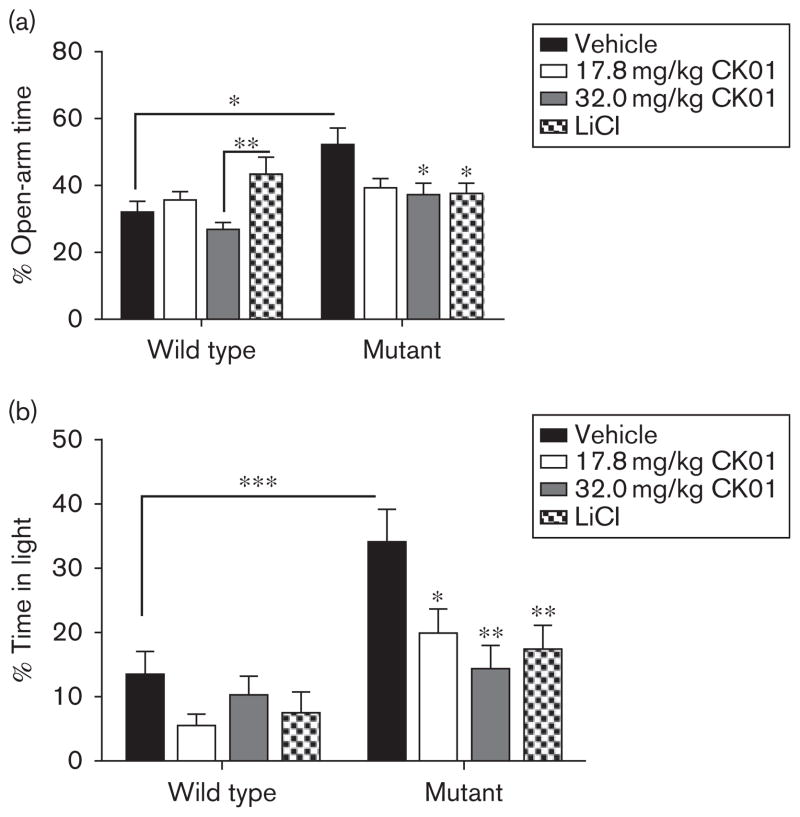Fig. 2.
CK01 administration normalized anxiety-related behavior in the ClockΔ19 mice. (a, b) The ClockΔ19 mice and the wild-type (WT) littermates were assessed for anxiety-related behavior following CK01 and lithium administration in both the elevated plus maze (EPM) (a) and dark/light test (b). Analysis by two-way analysis of variance revealed that ClockΔ19 mice display previously reported decreased anxiety-related behavior by spending more time in the open arms of the EPM [main effect of genotype; F(1,83) =6.39, P<0.02] and light side of the dark/light box [main effect of genotype; F(1,85)=21.93, P<0.001]. Bonferroni’s post-tests revealed that 17.8 mg/kg CK01 treatment caused a reduction in open arm time that did not reach significance in the EPM (a) and a significant reduction in time spent in the light side of the dark/light test (b, t =2.553, P<0.05). 32.0 mg/kg CK01 treatment in ClockΔ19 mice caused a significant decrease in EPM open arm time (a, t=2.55, P<0.05) and time spent on the light side of the dark/light test (b, t=3.62, P<0.01). As described previously, lithium had antimanic effects on the ClockΔ19 mice by restoring open-arm time in the EPM (a, t=2.75, P<0.05) and time in the light side of the dark/light test (b, t=3.25, P<0.05) to WT levels. CK01 treatment had no significant effect on the anxiety-related behavior when compared with the vehicle-treated WT mice; however, Bonferroni’s post-hoc tests revealed that lithium treatment caused an anxiolytic effect that differed significantly from mice receiving 32.0 mg/kg CK01 (a, t =3.04, P<0.01), but not vehicle or 17.8 mg/kg CK01 treated mice. LiCl, lithium chloride. *P<0.05, **P<0.01, ***P<0.001.

